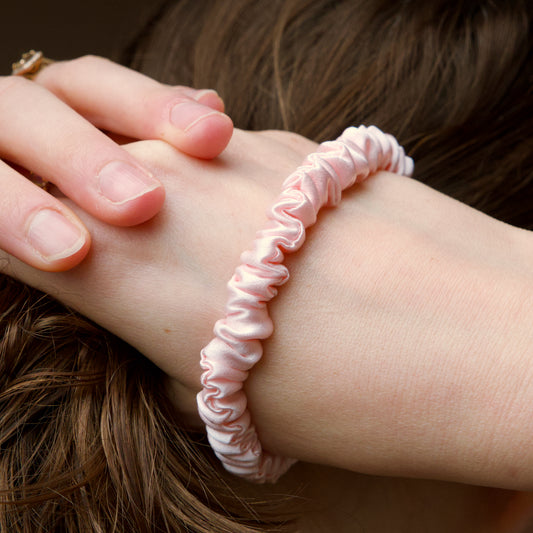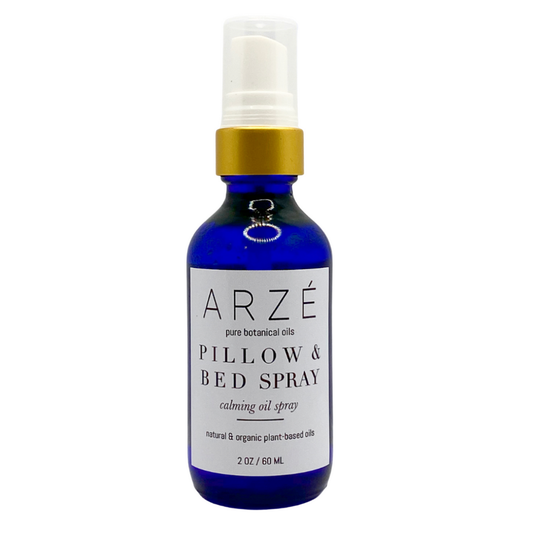
What does Momme Silk mean?
Joe Rinaldi JohnsonShare
The meaning of Momme when describing silk fabric
Momme (pronounced 'mom-ee') silk is a term used to refer to the weight of silk fabric. It is a unit of measurement that is commonly used to compare the thickness and quality of different silk fabrics.
The term "momme" comes from the Japanese language, which refers to a unit of weight, originally equal to the weight of one Mon coin. Today, silk fabrics are traditionally measured in momme, and the weight of the fabric is an important factor in determining its quality.

Pink silk fabric closeup - Susan Wilkinson
To measure the momme weight of silk fabric, a sample of the fabric is weighed on a scale. The weight is then expressed in momme, which is equal to 1 pound (0.45kg) per 100 yards (91 m) of silk at a standard width of 45 inches (1.2 m).
A silk fabric that weighs 8 pounds per 100 yards would be considered an 8 momme silk fabric. A fabric that weighs 19 pounds per 100 yards would be considered 19 momme, and so on.
The momme weight of silk fabric can vary widely, from as low as 3 momme to as high as 30 momme or more. Generally, the higher the momme weight, the thicker and heavier the fabric will be.
| Momme Silk Measure | Weight per 100 yards (lbs) | Weight per 100 yards (kg) | Typical Weave | Suitable For |
|---|---|---|---|---|
| 6 Momme | 6 lbs | 2.7 kg | Chiffon, Organza | Lingerie |
| 12 Momme | 12 lbs | 5.4 kg | Crepe De Chine | Lingerie |
| 19 Momme | 19 lbs | 8.6 kg | Charmeuse | Clothing, Pillowcases, Accessories |
| 22 Momme | 22 lbs | 10 kg | Charmeuse | Clothing, Pillowcases, Sheets, Acccessories |
| 25 Momme | 25 lbs | 11.3 kg | Charmeuse | Curtains, Pillowcases |
| 35 Momme | 35 lbs | 15.9 kg | Raw Silk | Producing Silk Material |

A silk pillowcase made from 0.8m2 on a scale weighing 83, equating to 25 momme.
What does 22 Momme Silk mean?
A 22 momme silk weighs 22 pounds (9.97kg) per 100 yards of standard-width silk. This is a significant amount of silk, making 22 momme silk a high-quality, durable material suitable for a range of products like bedding and hair accessories. Due to the higher amount of silk material A 22 momme silk will likely be significantly more expensive than a lower-momme product.
Video Explaining how to verify the Momme weight of silk
Momme vs Threadcount
When it comes to cotton products, it's common to look for higher threadcount as a proxy for the quality of the material. But this doesn't apply to silk.
Although silk is made from threads like cotton, each thread is very fine and varies in diameter and length, making it less practical to use as a standard measure for comparing the quality of silk fabrics. Because of this, it's best to look to Momme when it comes to silk products.
What does 'MM' mean when it comes to silk?
We usually think 'MM' or 'mm' refers to milimetres. But when it comes to silk the writer is probably referring using it as an abbreviation for Momme! Confusing, eh?
Is a higher Momme always better?
Not necessarily, no.
Higher momme silk fabrics are generally more expensive as more silk is needed to produce them. They are also usually more durable, which makes them great for bedding and clothing. For clothing and bedding such as silk pillowcases a 19 or 22 momme weight is about right, pairing enough weight to drape and give a luxurious sheen with the durability needed for everyday use.
Silk fabrics with a lower momme weight, on the other hand, tend to be lighter and more sheer. They are often used for summer clothing or lingerie because of their lightweight and breathable properties. A 6-12 momme for chiffon silk in lingerie would be ideal, ensuring they are lightweight and breathable.
But there are other factors that matter too:
- The grade of the silk
- Whether it is Mulberry Silk or another type of silk
- The quality of the manufacturing process
- The cut and construction quality
Examples of 19 Momme and 22 Momme Silk

A 22 Momme Silk pillowcase, made by Glam

Closeup of A 22 Momme Silk Hair Skinny Scrunchie

Conclusion: it depends
In summary, whilst momme is an important factor to consider when choosing silk fabrics, it's not the only factor. It depends on the product and what you intend to use it for.











